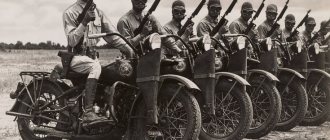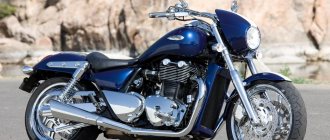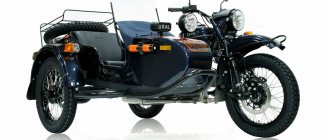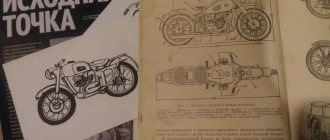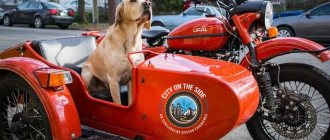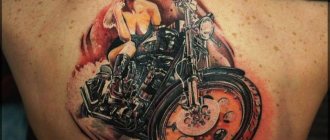Kia Rio is assembled at Russian and several foreign factories. Attractive and inexpensive models are readily purchased by Russian car enthusiasts. Due to expensive logistics and time costs for transporting a sufficient number of machines, the manufacturer uses a local production policy. This eliminates unnecessary customs clearance costs and saves a lot of money.
Major Kia car manufacturers in the world.
- South Korea. The birthplace of the company, where the main model range intended for the Asian market is produced.
- China. The largest production in the world. Here they produce an assortment that covers the entire demand of the country’s domestic and foreign markets.
- Ecuador. The most budget modifications are produced here and sent to South American countries. Cars are characterized by low cost and relatively low quality.
- Indonesia. The plant produces cars for Southeast Asia and neighboring countries.
- The Philippines is the most advanced and technologically advanced plant in 2021.
- Russia. In the photo below you can see how the process of assembling cars takes place at a domestic plant. Here the concern produces cars of several models, supplied to our region.
There are no production facilities as such in Europe. The company supplies cars here directly from Korea or from nearby factories. This is due to the high cost of building a production line and maintaining it. It is cheaper to deliver cars of Asian origin.
Where is Kia Rio assembled for Russia?
Production has been organized for us in the city of St. Petersburg. Models RIO, CERATO and several others are assembled here. The manufacturer supplies cars to the CIS countries and Eastern Europe. The cars differ from their Korean counterparts in a number of changes.
- Reinforced suspension. Domestic roads are not of good quality, which imposes certain difficulties. Standard elements do not withstand rough use over rough terrain. They are made much stronger and heavier than for the Koreans.
- Cheaper plastic. Domestic cars, despite their higher cost than Korean ones, are equipped with plastic elements of poor quality. This is due to the specifics of production.
- More powerful heating system. It is understood that in winter the car will drive in severe frosts, which forces the manufacturer to install high-performance air conditioners and heaters.
- There are reinforced body elements. This is also due to the poor quality of the road surface.
What year did assembly start in Russia?
In Russia, the manufacturer began mass production of cars in 2005 in Izhevsk. Prior to this, cars were produced in minimal quantities due to the lack of necessary facilities and infrastructure. After “tightening up” the conditions, the manufacturer had to move Rio production to St. Petersburg and Kaliningrad, and at the beginning of 2011 the first car rolled off the assembly line.
Engines, configurations and prices of KIA Rio in the world
Despite such a wide registration of the budget sedan in many countries around the world, the configurations and engines are virtually the same everywhere. The Koreans offer two gasoline engines for their B-class car. This is a 1.4-liter naturally aspirated gasoline engine without turbines and other modern technological means, as well as a more powerful 1.6-liter engine that consumes gasoline. The potential of the units is measured at 107 and 123 horsepower, respectively.
Two manual transmissions with 5 and 6 speeds and an automatic with 4 shift ranges are available. The car is based on a universal platform for B-class Hyundai-KIA RB cars. A classmate and actually a technical copy of the car is the Hyundai Accent (sold in Russia under the Solaris brand). The main configurations of the car are as follows:
- Comfort - the basic version of the car without any expensive functions or convenient add-ons (not available in all countries);
- Luxe - complemented by air conditioning, several important comfort options and appearance additions;
- Prestige is a well-priced and fairly rich package, which includes an exclusively older power unit and many technical surprises;
- Premium is the most expensive and charged version of a budget car, which will delight you with excellent technologies.
In the latest configuration, the Koreans offer 16-inch alloy wheels, many decorative chrome elements, increased efficiency of security systems, as well as a keyless entry and engine start system. This is a rarity for budget cars, which is why the Kia Rio in this configuration is popular, despite the high cost.
Car prices depend on the country of production and sale. For example, in the US, the Korean version of the Kia Rio costs $13,900, and in Russia base prices start at 510 thousand rubles ($14,500). In Korea, the car costs just over $10,000 and is a bestseller in its class.
When did they start releasing Rio?
The first generation cars rolled off the assembly line in 2000. Production continued until 2005 inclusive. After this, the second generation appeared on the market. Here the manufacturer has significantly updated the appearance and equipment of the machine. There were no major restylings or updates similar to the first version.
Since 2012, 3rd generation cars began to appear on the market. The updated version already had a more modern look. All external panels have changed, including the body - the car has become longer and wider, relative to its prototypes. Additionally, modern engines, transmissions and chassis appeared.
The most modern 4th generation cars will be presented in mass production at the beginning of 2021. The cars represent the latest modification with advanced power plants and electronics.
Representative office in Russia
The main thing for KIA in the Russian Federation is in St. Petersburg. There are also official representatives in major cities throughout the country.
Production in Russia
The main one is in St. Petersburg. Car bodies, interiors and chassis are assembled here. There is also an additional plant that assembles power units and transmissions.
Where else are Kia cars assembled for the Russian market?
Additionally, there is a small production facility in Izhevsk. A limited range of models is produced here. At the same time, in small volumes.
How is the assembly process carried out in Russia?
Both at the Kaliningrad enterprise where Rio is assembled, and at a similar plant in St. Petersburg, the assembly process has identical technology. Upon release, each future car will have to go through 4 workshops, namely:
- stamping of body components;
- welding cycles (direct assembly of the body is performed);
- painting (application of protective and primer layers, painting, varnishing with subsequent polishing);
- final assembly (implies completion of the required list of components).
In the manufacture of body panels, the main raw material is a special type of Hyundai-Hysco steel, which has a zinc coating. Before the welding process, parts are subjected to special control to ensure that their quality meets regulatory requirements.
The movement of sets of blanks from the stamping shop to their welding zone is carried out by means of a rail track. Next, the units are fastened into a single body using robotic welding manipulators
Painting is the most lengthy and scrupulous procedure. In addition to the previously mentioned stages of body coating, the parts are thoroughly cleaned and then dried. This ensures further uniform application of water-based enamel. Drying of body components is carried out in specially designed Euro dryers.
At the assembly shop, the future KIA Rio car is equipped with the necessary units and accessories.
Popular tags
distance between cities size of light bulb size of windshield wipers Moscow region Sverdlovsk region telephone traffic police Leningrad region country of production Nizhny Novgorod region Chelyabinsk region country of manufacturer Krasnodar region Krasnoyarsk region Tver region Vladimir region Republic of Tatarstan Perm region Irkutsk region Kaliningrad region Kaluga region Republic of Bashkortostan Volgograd region Kemerovo region Tula region Kirov region Ivanovo region Saratov region Bryansk region Khanty-Mansi Autonomous Okrug Vologda region Murmansk region Voronezh region Novosibirsk region Smolensk region Republic of Karelia Sakhalin region Arkhangelsk region Rostov region Kostroma region Republic of Sakha (Yakutia) Yaroslavl region Orenburg region Trans-Baikal region Republic of Dagestan Komi Republic Stavropol region Penza Region Kurgan Region Belgorod Region Kabardino-Balkarian Republic Chuvash Republic Novgorod Region Amur Region Lipetsk Region Yamalo-Nenets Autonomous Okrug Tambov Region Altai Territory Pskov Region Republic of Mordovia Khabarovsk Territory Oryol Region Ulyanovsk Region Ryazan Region Primorsky Territory Republic of Buryatia Kurgan Region St. Petersburg Tom skaya region Astrakhan region Samara region Omsk region Tyumen region Udmurt Republic Chechen Republic Republic of Khakassia Republic of Tyva Osago Republic of Mari El Republic of Ingushetia winter tires winter tires Republic of North Ossetia-Alania Karachay-Cherkess Republic Republic of North Ossetia alfa romeo automobile oil official dealer alfa romeo republic of kal mykia carsharing tula gasoline citroen c4 official dealer Alfa Romeo Magadan region Chukotka Autonomous Okrug Republic of Adygea intercept parking Ozersk Krasnoznamensk Krasnoslobodsk
What to do if you become a victim of scammers?
Car "Lifan" - country of origin, technical characteristics and reviews
If you find yourself in an unpleasant situation, it is important not to panic. Whatever happens, do not leave the scene
Stop and call the traffic police. In most cases, calling traffic police officers scares away the fraudster and forces him to retreat.
Try not to get out of the car. If you leave the salon, it will be easier for scammers to put pressure on you, threaten you with physical harm, surround you, and play their roles. Therefore, try not to leave the salon until the traffic police arrive.
If you need legal assistance in fraud cases, our specialists are ready to help. Experienced specialists will advise you on any issue. We will monitor the actions of law enforcement officers and will not allow you to be wrongfully accused. Our specialists will not allow scammers and law enforcement officers to illegally demand money from you.
Russian build quality
Before buying a car, the buyer pays attention to the quality of production. The reliability and service life of the car will depend on where the Kia Rio is produced. Russian Kia car owners complain about the unreliability of the screw fastenings, or rather, they complain about their absence. Also, some batches of cars have uneven body gaps. Russian-made Kia Rios may have electrical wiring with electrical tape instead of heat shrink. Some owners speak negatively about noticeable defects on the plastic panels of their cars. Drivers also make complaints about creaking seat backs. And the uneven road surface with all the holes and potholes will soon let the owner know that the domestically assembled Rio model lacks vibration and noise insulation.
Kia Rio 2015 is also assembled at the St. Petersburg plant. Two years ago, about 90 thousand cars of this model were assembled and sold in the Russian Federation.
Story
In 2006, German Peter Schreyer, who had previously designed Audi and Volkswagen cars, became the chief designer of Kia Motors. One of the main distinguishing elements of the new design concept from Schreyer was the proprietary radiator grille, called the “tiger nose” (“Tiger Nose”, in Russian translation - “tiger grin”).
Between 2008 and 2011, Kia's annual global sales increased by 81% to nearly 2.5 million vehicles per year.
In 1997, KIA introduced its first flagship, its first rear-wheel drive luxury model, the KIA Enterprise. The model was focused primarily on the domestic market of its country and was not officially supplied to other markets, although it is rare in the CIS and the Middle East.
After the relative failure of the Opirus, there was a long pause in the luxury sedan niche, and in 2012, KIA introduced its first rear-wheel drive model, which truly had some success with buyers, which was the KIA Quoris luxury sedan (KIA K9 in Korea). At the end of December 2012, Peter Schreyer became one of the three presidents of KIA Motors (president of design), retaining the position of chief designer. For the first time, a foreigner became one of the presidents of South Korean KIA Motors.
In 2014, the KIA brand rose to 74th position in the Interbrand rankings, reaching an estimated value of US$5.4 billion, while the percentage increase - again 15% - significantly exceeded the average increase among the Top 100 of the rating, which was 7%.
Gamma series motor design
The engine is gasoline, four-stroke, four-cylinder, in-line, sixteen-valve, with two camshafts.
Engine with index G4FC in the engine compartment of one of the first Solaris.Engine with index G4FC in the engine compartment of one of the first Solaris. The cylinder block is cast from aluminum alloy using the Open-Deck method with a single cylinder casting free-standing at the top of the block. In this case, the inner surface of the cylinders is formed by thin-walled cast iron liners, cast during the production process.
The crankshaft is made of high-strength cast iron, with five main and four connecting rod journals. The shaft is equipped with four counterweights, made along the continuation of the two outer and two middle “cheeks”. The pistons are made of aluminum alloy and have a short, lightweight skirt.
A non-shrink gasket is installed between the block and the cylinder head.
There are two camshafts installed at the top of the cylinder head. One shaft drives the intake valves of the gas distribution mechanism, and the other drives the exhaust valves. A special feature of the camshaft design is that the cams are pressed onto a tubular shaft.
The valves are actuated by the camshaft cams via cylindrical tappets. The camshafts are driven by a chain from a sprocket on the toe of the crankshaft. A hydromechanical chain tensioner is used. On engines of different generations, a valve timing control system is used, that is, changing the timing of opening and closing valves.
The engines of the Gamma I generation had a change in the position of the intake camshaft, and on the second generation - on both camshafts.
Gamma I engine block head. Gamma I engine block head. Gamma II engine block head. Gamma II engine block head. Phase control only on the intake camshaft (Gamma I).Phase control only on the intake camshaft (Gamma I).
Phase adjustment on the intake and exhaust camshafts (Gamma II). Phase adjustment on the intake and exhaust camshafts (Gamma II).
The engine power system is distributed fuel injection. Each spark plug has an individual ignition coil.
Myths and reality
1. The engines are made in China, and therefore the quality is not very good. The engines are indeed manufactured in China, but what is more important is that the production of the engines is established at the Hyundai Motor Co. plant, and therefore the quality is guaranteed by a well-known Korean manufacturer.
2. The engine cylinder block is aluminum, disposable and non-repairable. In fact, the design of the cylinder block allows the liners to be replaced with new thin-walled cast iron ones, so the engine can be repaired several times using the relining method.
3. The crankshaft has a design with only four counterweights, and therefore bends more than, for example, VAZ “transverse” engines. Yes, from the point of view of engine design, the Korean shaft experiences heavy loads, but the practice of repairing such high-mileage engines shows that wear on the main and connecting rod journals is usually minimal, and the matter is limited to installing new nominal bearings.
4. Engine life is 180,000 km, after which the engine can be thrown out. Practice shows that with good care, some engines can last 400,000 kilometers or more. I only recommend changing the engine oil more often - once every 7,500 - 10,000 km, filling up with fuel at branded gas stations and preventing the engine from overheating.
5. Lightweight and shortened pistons quickly begin to hang out in the cylinders. Yes, of course, the design of the pistons is not the same as that of the “millionaires” of the eighties and nineties of the last century, but relatively inexpensive repairs with the replacement of pistons and rings, as well as troubleshooting and repair of the cylinder head at a mileage of 200,000 km can significantly extend the life of the engine.
6. The timing chain drive is not particularly reliable. Up to a mileage of 150,000–200,000 km, the chain usually runs without any major complaints with good oil and a calm driving style. A multi-row toothed chain serves very well and sometimes the sprockets wear out more than the chain.
7. The lack of hydraulic compensators creates a lot of problems for the owner. According to the maintenance regulations, valve adjustments should be carried out at least every 90,000 km. The real need for adjustment usually occurs somewhat later than the specified period.
Another thing is engines running on gas. Here the gaps really need to be monitored more carefully. In general, saving on hydraulic compensators is really a minus of this engine.
And, what’s most offensive, the ancestor, the G4EC engine of the first generation Hyundai Accent, had hydraulic compensators.
8. Phase shifters have an unreliable design. In fact, complaints about phase shifters are sporadic, and only when the oil is not changed on time or its quality is low.
9. Noisy engine operation, especially noticeable at idle. Yes, there is a characteristic “chirping” of the fuel injectors, which is not particularly pleasant to the ear, but this is the only loud sound produced by a working engine.
10. Destruction of the ceramic block of the catalytic converter disables the piston group of the motor. The ceramic block of any catalytic converter is really not particularly durable under our operating conditions.
If the neutralizer is placed far enough from the engine, then there is no danger to the latter. This arrangement is used by some automakers (for example, Renault), but not Hyundai.
When chipped, pieces of neutralizer ceramics can actually get into the cylinders and damage the working surfaces. Destruction is promoted by:
- Accumulation of unburnt fuel in the ceramic block due to misfires.
- Mechanical damage to a section of the exhaust system and sudden thermal shocks when overcoming puddles.
- Use of low-quality fuel and large amounts of fuel additives.
The catalytic converter in the catalytic converter of the Hyundai Solaris (pictured) is located too close to the cylinder head and, if destroyed, can damage the engine. But this doesn't always happen. For example, Lada Vesta and Grant cars have a similar design of the cathode collector, but a similar phenomenon is not observed.
The catalytic converter in the catalytic converter of the Hyundai Solaris (pictured) is located too close to the cylinder head and, if destroyed, can damage the engine. But this doesn't always happen. For example, Lada Vesta and Grant cars have a similar design of the cathode collector, but a similar phenomenon is not observed.
How to find out the country of manufacture of KIA by car VIN code?
The VIN code of the car contains all the necessary data, including the country of manufacture.
You can find out in a few seconds which country your car was actually assembled in. To do this, you just need to take the first characters of the VIN code and see which values match the code of a particular country. For KIA, the correspondence will be as follows:
- 5x - United States of America;
- CG - Kingdom of Morocco;
- KN - Republic of Korea;
- LJ - People's Republic of China;
- TM - Czech Republic;
- U5, U6 - Slovak Republic;
- X4, XT, XW, Z9 - Russian Federation;
- XW - Republic of Kazakhstan;
- Y6 – Ukraine.
These designations clearly indicate the country of final assembly. But the presence of these numbers and letters does not mean that your car was entirely manufactured in a particular country. In most countries, only large-scale assembly of Korean cars is carried out. This means that the main components and body elements are manufactured in Korea and delivered to the target plant for subsequent assembly of the finished car.


